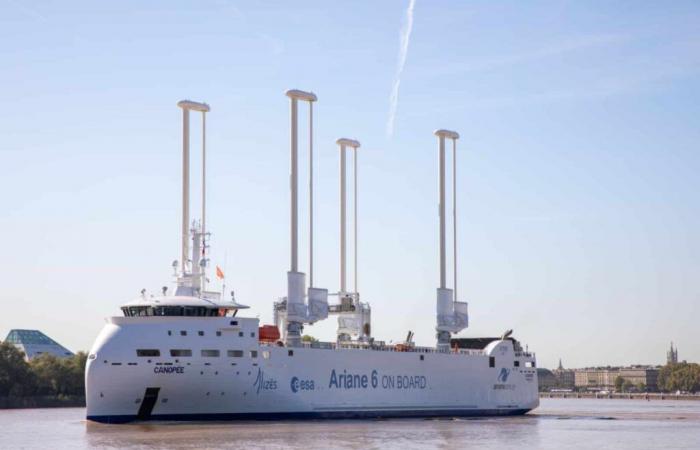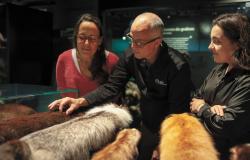The first commercial flight of the European rocket Ariane 6 will not take place before February 2025according to the latest announcements from Arianespace.
An ambition hampered by technical adjustments
Initially planned for December 2024, the launch of a first commercial flight should allow Ariane 6 to succeed the famous Ariane 5, while offering a competitive launch platform against SpaceX and Blue Origin. This delay is due to a set of “small deviations» identified during the first inaugural flight in July 2024. These anomalies, although minor, require in-depth corrections to ensure the success of future missions.
According to Arianespacea detailed analysis of the collected data is currently underway to resolve these points of deviation. Experts agree that this caution is justified, because the development of such a complex launcher must meet impeccable reliability standards. The first operational flight will include the deployment of the CSO-3 (Optical Space Component) military satellite, essential for French defense.
Ariane 6: a technological feat with multiple challenges
Designed to adapt to the growing needs of the space market, Ariane 6 is a modular launcher, available in two configurations: Ariane 62 and Ariane 64. The first has two side boosters and is intended for lighter payloads, while the second, equipped with four boosters, can support larger loads, including satellite constellations.
This flexible architecture is a direct response to the rise in commercial and institutional launches, where international competition is intense. Ariane 6 also incorporates innovations such as the use of cryogenic propellants (liquid hydrogen and oxygen), offering increased performance while reducing launch costs. “We must maintain a competitive launch rate while guaranteeing impeccable quality”declares an Arianespace spokesperson.
Key technical elements include:
- Advanced cryogenic stages : The first stage uses a Vulcain 2.1 engine powered by cryogenic propellants (liquid hydrogen and oxygen), while the upper stage is equipped with the Vinci re-ignitable engine, capable of multiple firings for complex missions.
- P120C solid thrusters : Also used by the Vega-C launcher, these thrusters reduce production costs thanks to the pooling of technologies.
- Economy and sustainability: The rocket relies on a streamlined supply chain and innovations that lower launch costs by around 40% compared to Ariane 5, while meeting modern environmental criteria.
These innovations allow Ariane 6 to compete with private players, while guaranteeing essential reliability for institutional and military missions.
A strategic context for the French army
The delay of this first commercial flight has significant repercussions, particularly for the French army. The CSO-3 satellite, the last link in a constellation intended for observation missions, is crucial for strengthening military intelligence capabilities. Putting this satellite into orbit will improve the precision of the data collected and guarantee strategic autonomy in a tense geopolitical context.
However, this expectation also weighs on European institutions and commercial partners who rely on Ariane 6 for the deployment of scientific, observation and telecommunications satellites.Arianespace, despite this postponement, displays its ambition to catch up by 2025, with a planned increase in the rate of launches.
Competition exacerbated by private players
Faced with the meteoric rise of SpaceX and its competitive prices, the Ariane program must position itself as a credible alternative for governments and the private sector. SpaceX, with its reusable Falcon 9 system, revolutionized the sector, forcing historical players to rethink their strategies.
Despite the delays, Europe is banking on the reliability and durability of Ariane 6 to maintain its presence in the space sector. With a ramp-up in launches planned for 2025,the rocket should meet the expectations of emerging markets and more complex missions.
space activities, Ariane 6






